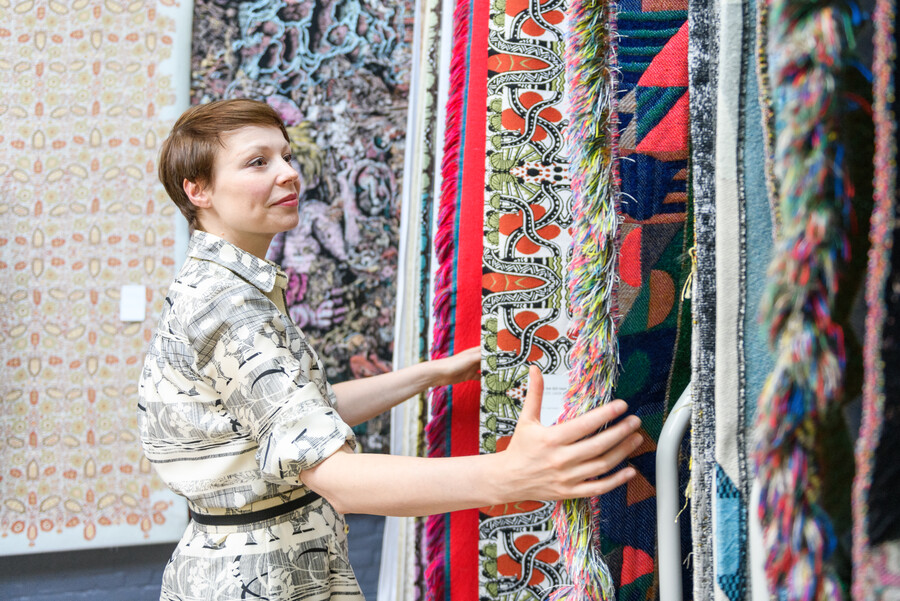Both the physical and digital Sample Studio have doubled in size. Besides 225 weaving samples, there are now almost as many knitting samples from the past 15 years. Explore the technical details online or – literally – get your hands on the samples in the renovated space next to the lab.
Containing over 200 weaving samples, the Sample Studio has proven its worth in recent years. The samples serve as a practical reference for product developers and designers, demonstrating what is possible or the direction a project could take. But the studio is also invaluable for museum visitors: this is where they can touch anything they want, which is at least as appealing as what they see. From this month, the knitting samples from the past 15 years are also accessible to all – either physically in Tilburg or remotely at samplestudio.textiellab.nl.
Collection clean-up
Many of these samples were already available but were not presented in such an organised way. “Most of them were hanging in the knitting department, but there were far too many,” says Inez Smit, the Sample Studio’s project leader. “The product developers always knew where to find the right samples – it’s unbelievable how much information they have at their fingertips – but the collection was in dire need of a clean-up.” Smit organised and supervised the operation to make a relevant selection available to a wider audience. This involved laying out all the samples and deciding with the product developers what could go and what had to stay. “We got rid of about half of the samples; there were a lot of duplicates. But we also reknitted samples if certain techniques were missing or the samples had already passed through too many hands.”

Photo: Jostijn Ligtvoet
Little octopus
The result is an impressive collection that highlights the wide range of possibilities in the lab – from an enormous three-metre-wide circle knitted in one piece by visual artist Karin van Dam to a tiny octopus-like shape knitted by product developer Sarena Huizinga, also in one piece. Alongside this are examples of jacquard knitting, intarsia knitting, weave-in knitting, structured knits, cables and short rows. You will also find small pieces made with complex stitches, melting, shrinking or conductive yarns, as well as complete 3D knitted objects and garments. And the collection continues to grow. On average, ten new samples are added to the Sample Studio every year. “It doesn’t always have to be new techniques,” says Smit. “It can also be new applications of an existing technique. We use the samples to show where techniques in the hands of artists can lead.”
“Alongside this are examples of jacquard knitting, intarsia knitting, weave-in knitting, structured knits, cables and short rows. You will also find small pieces made with complex stitches, melting, shrinking or conductive yarns, as well as complete 3D knitted objects and garments.”
Online search
While the physical Sample Studio is a good place to browse reference material with the product developer, makers can orient themselves in advance in the online Sample Studio, which boasts an extensive search function. You can search by category, name, technique, material and aesthetic properties. In addition to hundreds of knitting and weaving samples, the online studio also contains samples from the embroidery, laser cutting and passementerie departments. All the samples have been carefully photographed, with images including detailed close-ups and photos of the techniques applied in practice. For instance, the Bernotat & Co entry shows not only the pink knitted sample with an openwork structure but also how the knitted tunnels were then filled and turned into a cover for the back of a chair. Besides the photos, each sample includes the maker’s name and information about the development process in the TextielLab. “Our aim is not to encourage makers to copy each other but to inspire their own experiments,” says Smit. “We want to share existing knowledge that can serve as a springboard for innovation. It’s important for makers to have access to specialist knowledge about the various techniques in the lab, anytime and anywhere. That’s what the updated Sample Studio provides.”